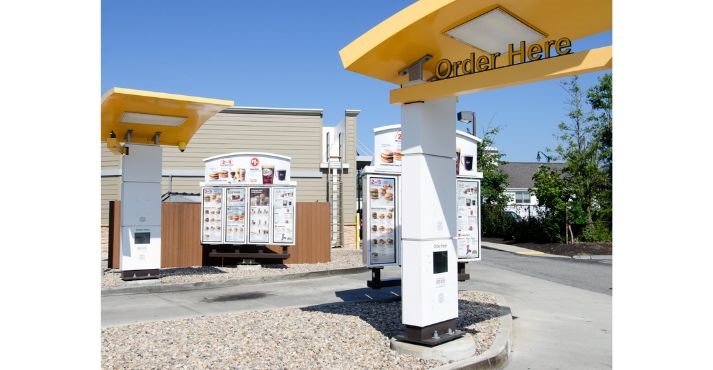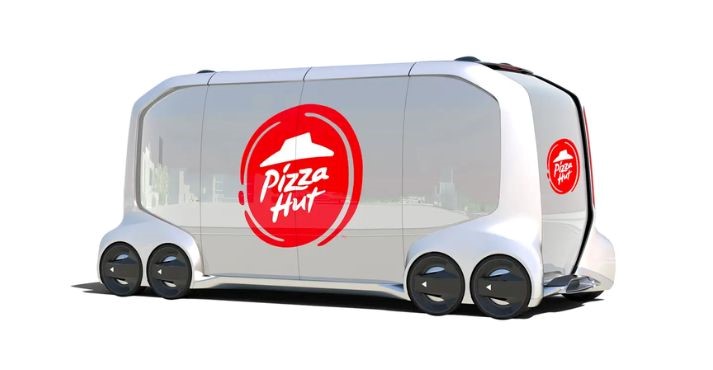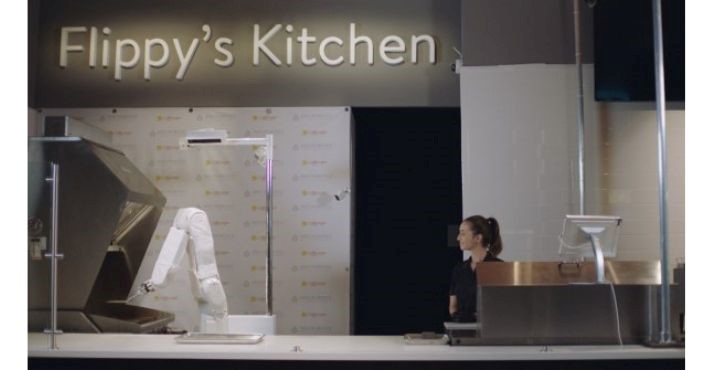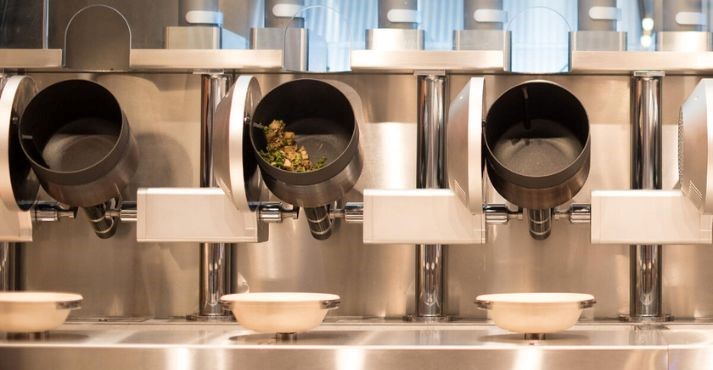Robots in food service are hitting the headlines – preparing, cooking, and serving food.
We live in a dynamic environment, and ever-changing customer preferences force the establishment to continuously reorganize and redefine their operations.
The food industry robotics market is rapidly growing, with projections indicating that the market will reach a value of US$0.41 billion by 2023. Moreover, the market is expected to reach US$0.51 billion from 2023 to 2028.
With customers increasingly becoming comfortable with robots in food service, restaurants continue to patronize it. From growing interest in agritech to the adoption of foodtech, robots are revolutionizing the food service industry.
This blog will explore how robotics drastically changes the food services industry landscape.
- How Robots are Transforming the Food Service Industry
- The Uses Of Robotics In The Food Industry
- Examples of Robots in the Food Industry
- Challenges of Automation in the Food Industry
- What’s the Future of Robotics in the Food Industry?
How Robots are Transforming the Food Service Industry
Food and Service establishments are set to spend heavily on robotics.
Activities such as mixing, processing, packaging, and sorting are already automated to some extent, and these will continue to see heavy investment over the coming years. Conversely, other activities that require a high level of human input are also likely to be automated using robots in food service.
Moving forward, robots are enhancing operational efficiency, monitoring and predicting food demands, improving customer experience by enhancing food safety and quality, and improving order preparation consistency and menu item availability.
Technological advances could also lead to a greater focus on food warehousing, improving inventory management, and ensuring compliance. But behind the scenes, robots and AI are busily aggregating and analyzing data, amplifying efficiency and mitigating labor costs.
According to a Deloitte research study, customers are increasingly comfortable with drones and driverless car delivery options, with 47% saying they would order from a restaurant that offered this type of delivery versus 44% in 2021.
Contactless delivery has also maintained prominence since the pandemic, allowing faster drop-offs.
The Uses Of Robotics In The Food Industry
As technology in the hospitality industry evolves, the sector is witnessing a notable surge in adopting robots in the food industry.
From cooking and food preparation to the final delivery stages, robots are emerging as a valuable asset, capable of thriving in demanding environments and executing tasks impeccably.
Let’s explore the uses of robotics in the food industry.
Robotics In The Kitchen
Recent advancements in automation technology have led to the development of food preparation robots that can be used in kitchen operations, including cooking and drink service.
With robotic arms in the kitchen, these tasks, which humans previously did, can be done more quickly and efficiently with robots.
For example, Moley’s robotic arm is an advanced kitchen robot that can reproduce the movement of a human chef, create a meal from scratch, plan your menu, control calories, suggest dishes based on the items you have in stock, and even plate up the food.
Another excellent example of such a robot is Richtech ARM, which can be your barista, fry cook, and trained chef. This robot can perform tasks with high precision, reducing the risk of human error.
Robotic Food Delivery Service
Robots that serve food improve efficiency, convenience, and delivery by operating autonomously for food delivery services. These robots are equipped with alarms and cameras for monitoring theft attempts.
For example, food delivery robots like Matradee L are designed to reduce human labor and ensure accurate and contactless deliveries. Restaurants, hotels, and campuses increasingly use these robots to enhance customer service and streamline operations.
Another example of a food delivery service robot is Starship, a six-wheeled ground robot that can autonomously navigate streets and sidewalks. With sensors and AI mapping, the Starship robot precisely knows its location to the nearest inch.
Robots for Food Processing
Foods have a variety of shapes and sizes and can be delicate. Robots are employed in food processing to enhance efficiency and safety.
Food processing robots can quickly help with sorting, cutting, and packaging tasks. These machines work quickly and precisely, reducing the risk of contamination.
Some other kinds of food processing robots being used include:
- Vision-guided sorting food robotics to sort through produce
- Robotic dispensing arm for food decoration and assembly
- Vision systems to read barcodes
- Robotic arms for food handling
Additionally, they can handle repetitive jobs, ensuring consistency in food production, which benefits both food service businesses and consumers.
For example, Dobot CR5 is a robotic arm with an integrated AGV that can accurately emulate human actions by demonstrating the path.
Robots in Food Packaging
The Food Service industry uses packaging robots to open, fill, pack, seal, and label packages, ensuring consistency and adherence to safety standards.
These machines can work tirelessly and at high speeds, significantly increasing production rates while reducing labor costs.
Their flexibility allows for easy adaptation to different product sizes and shapes, making them an indispensable asset for food packaging, ensuring food reaches consumers safely and efficiently.
Examples of Robots in the Food Industry
Robots in the food industry go beyond efficiency by addressing safety, hygiene, and labor challenges.
They can handle tasks in hazardous environments, reducing employee exposure to heat and chemicals. Robots in the food industry enable consistent, contamination-free food handling, enhancing overall product quality.
Let’s explore some critical examples of restaurant robots used by food service businesses.
McDonald’s
McDonald’s has integrated robotic ordering systems, which are believed to handle 80% of orders accurately and up to 85% of the orders at an outlet.
Also, voice-recognition technology is a robotic ordering system that enables McDonald’s to automate the process without staff.
However, the management at McDonald’s acknowledged that a lot of infrastructural investment and reorganization would be required if the robotic systems were to be placed across the outlets worldwide.

Source: Twisted
Domino’s Pizza
Domino’s has experimented with an autonomous pizza delivery vehicle by Nuro. This Nuro R2 is the first completely autonomous, occupantless on-road delivery vehicle used by Dominos Houston, with regulatory approval by the U.S. Department of Transportation.
Here’s how it works: customers can select order delivery by R2, provide location, and receive a unique PIN to retrieve their order.
Customers can also track the vehicle via GPS; once the R2 arrives, customers will be prompted to enter their PIN on the bot’s touchscreen, and R2’s door will then gently open upward, revealing the customer’s hot Domino’s order.
It will further enhance the concept of autonomous delivery among companies, enticing them to understand better how customers respond to the robot food service deliveries.

Source: Dominos
Pizza Hut
Pizza Hut partnered with Toyota for a self-driving pizza vehicle called e-Palette, an autonomous concept vehicle. It is designed to support the company’s delivery business in the future or serve as a mobile kitchen in areas of the world where there is demand.

Source: Insider
Also, Pizza Hut has unveiled a robot-operated mobile pizza factory in the bed of a modified Toyota Tundra. The prototype will use automated food service technology and robotic arms to cook on the go, letting the chain expand its delivery area without the pizzas getting cold.

Source: Robotics Business Review
Caliburger
Flippy is the world’s first autonomous kitchen assistant that uses 3D, thermal, and camera vision to perceive what’s on a grill. The burger-flipping robot is reportedly capable of grilling 150 burgers per hour in the Caliburger kitchen.
With AI and machine learning, 3D scanners and regular computer vision sensors installed in Flippy inspect each patty, looking at its color, shape, and size.
The robot monitors up to 12 patties simultaneously, tracking each burger’s cooking time and temperature. It uses a spatula as an end effector to flip the burgers when necessary.

Source: Caliburger
Café X
Cafe X has also adopted robots serving food technology to automate their coffee shop and reduce customer wait times entirely. The robot, nicknamed ‘Gordon,’ can make up to three drinks in under a minute.
Customers order and pay for their drinks with an app delivered via the robotic arm and a retracting door. Implementing such restaurant robotics can result in reduced prices due to eliminating costly human labor.

Source: World Coffee Portal
Spyce
Spyce is the world’s first restaurant featuring a robotic kitchen. It is an automated cooking system featuring steamers and grills to prepare food according to customers’ diets or preferences, ready in a minute.
Spyce represents a fusion of technology and gastronomy, offering a glimpse into the future of foodservice by showcasing how automation can enhance efficiency while still providing a personalized dining experience.

Source: MIT
Zume Pizza
Zume Pizza has integrated automation and big data analytics in the form of a new pizza-making robot named Vincenzo. This automated robot is specifically designed to monitor pizza in Zume’s 800-degree ovens and determines when the crust hits peak par-bake perfection.
This robotic food machine utilizes six-axis mobility to remove the pizzas and indexes them in a 27-shelf pie wrack loaded onto a delivery vehicle.

Source: CNBC
Challenges of Automation in the Food Industry
The Food and Beverage Industry is changing rapidly with new market trends and technologies creating challenges for manufacturers and consumers.
Despite developments in robotics in the food industry, several challenges need to be addressed to fulfill the high demand for automating various food manufacturing processes in the food and service industry.
Let’s discuss some of the critical challenges of automation in the food industry.
Initial Cost of Implementation
Food businesses that haven’t leaped into the world of robotics are concerned with the cost. Implementing robotic automation requires heavy investment.
If we explore the reason behind the high initial cost, it is evident that food environments require incredibly high cleanliness levels and high-quality control. Therefore, the equipment must withstand wash-downs and chemical and steam cleaning.
Worker Layoffs
When tradition meets technology, it results in a workforce crunch. Throughout history, automation has been replacing humans.
While food robotics enhances efficiency and consistency in food manufacturing, it could displace workers at various skill levels, from kitchen staff to delivery drivers.
Balancing the benefits of food robotics with the preservation of employment opportunities and the quality of dining experiences remains a critical challenge for the future.
Technical Challenges
While food robots excel at replicating recipes, they need help to emulate the creative aspect of cooking, which often involves experimentation and spontaneous adjustments.
Also, at times, robots can malfunction. Incorrect programming or incorrect activation can lead to robot error that can affect food quality and, in some cases, leave staff at risk of injury. End-users in the F&B business should be acutely aware of this limitation and set their expectations accordingly.
Customer Acceptance
Historically, humans have been the service providers par excellence, but things have changed with the advent of food robotics and foodtech.
Automation has touched and transformed many aspects of daily life; consumers have heightened expectations around speed, accuracy, intelligence, and automation from food and beverage companies.
Yet, most consumers still feel human beings are integral, even critical, to the dining experience, as they expect human interaction.
Consumers may soon be in for a robotic experience as the technology redefines the food industry. With all things new, a fusion of curiosity, excitement, hesitation, and skepticism comes with the territory.
What’s the Future of Robotics in the Food Industry?
Human–robot collaboration is essential for efficiency.
When we look at the big picture, it becomes crystal clear that food-serving robots will take over in the future. The food industry is expected to be primarily automated in the next few decades.
Robots in the food industry have a wide application, from sowing seeds, irrigation, and harvesting the yield to processing food products to packaging and, in the end, storage in warehouses.
Here are some ways robotics is changing the future landscape of the food industry:
- Robotics streamlines food production processes, enhancing efficiency, reducing labor costs, and ensuring consistent quality.
- Robots aid in precision planting, harvesting, and monitoring, improving crop yields and resource management.
- Robots safely handle and package food products, ensuring hygiene and reducing contamination risks.
- Robots deliver food orders and assist in restaurant operations, enhancing customer experiences.
- Robotics enables tailored food production, catering to individual preferences and dietary needs.
Robotic applications in the food industry will grow in the coming years, revolutionizing food processing, handling, sorting, picking, palletizing, packaging and storage, and delivery.
Robots in Food Service (FAQs)
How much labor cost can food service robots save?
Robots in the food service business can run 24/7 and perform in at least 2-3 shifts; it would have taken a human to complete one. It will save substantial labor costs, boost sales, and increase productivity.
Are robots taking people’s jobs in the food industry?
Robots are not taking people’s jobs but instead filling gaps left by humans. Also, robots in the food industry are enabling new generations to study the mechanism of robotics and get ready for the future that is yet to come.
What company makes restaurant robots?
The following companies create restaurant robots:
- Miso Robotics
- Chowbotics
- Kitchen Robotics
- True Bird
- Bear Robotics
- Xrobotics
Conclusion
The rise of robots in food service is an undeniable trend, reshaping the industry. Robots in food service are changing the landscape. F&B companies are experiencing a wave of automation to optimize their processes.
Companies are investing time and money in food service robots as a solution to drastically growing consumer demands, increasing food prices, and strengthening the balance.
From food preparation to customer service, food robots streamline operations and reduce human error. However, while robots can enhance speed and consistency, there are concerns about their impact on employment in the food service sector.
It’s high time companies stay abreast of Asia’s Food and Beverage industry trends and harness the power of food robotics. It is no longer a questionable science; the results have proven their effectiveness in the food sector.
It is a transformative trend with potential opportunities, requiring careful consideration of technology and human efficiency.













